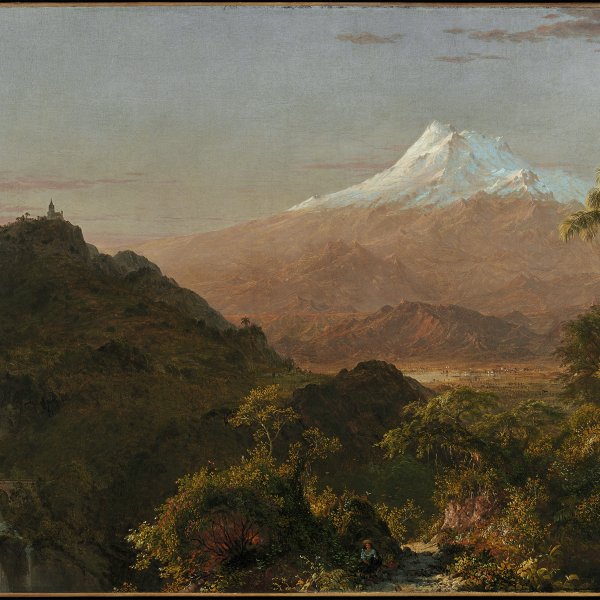Summer Days
1857
Oil on canvas.
103.5 x 143 cm
Museo Nacional Thyssen-Bornemisza, Madrid
Inv. no.
601
(1985.26
)
Not on display
Level 2
Permanent Collection
Level 1
Permanent Collection
Level 0
Carmen Thyssen Collection and Temporary exhibition rooms
Level -1
Temporary exhibition rooms, Conference room and EducaThyssen workshop
Although there is a tendency to link the painter George Inness to the Hudson River School, following his travels through France and Italy in the early 1850s his landscapes shifted away from the sublime aesthetic established by Thomas Cole and became subtler and more intimate. Summer Days, sometimes entitled Cattle Drinking, effectively combines poetry and reality. More than exalting the greatness of nature, Inness harmoniously blends an ideal representation with a real encounter with nature.
The work clearly denotes the mark left on the artist by the Italian landscapes of Claude Lorrain and the painting of the Barbizon artists, who taught him to paint outdoors and to combine knowledge and feeling in perfect harmony. However, as Barbara Novak points out, in this work, dated 1857, “Inness’s plein-airisme here is still closer to Hudson River ‘detail’ than to Barbizon ‘effect.’” Indeed, as the American Art historian states, the large rock to the right of the composition appears to have been dropped into the Claudian structure from an actual landscape.
The facture of the reddish clouds and the wildflowers heralds the transformation his oeuvre was about to undergo. In 1884, Inness wrote in a letter to Ripley Hitchcock, “Long before I ever heard of impressionism, I had settled to my mind the underlying law of what may properly be called an impression of nature.”
Paloma Alarcó
The work clearly denotes the mark left on the artist by the Italian landscapes of Claude Lorrain and the painting of the Barbizon artists, who taught him to paint outdoors and to combine knowledge and feeling in perfect harmony. However, as Barbara Novak points out, in this work, dated 1857, “Inness’s plein-airisme here is still closer to Hudson River ‘detail’ than to Barbizon ‘effect.’” Indeed, as the American Art historian states, the large rock to the right of the composition appears to have been dropped into the Claudian structure from an actual landscape.
The facture of the reddish clouds and the wildflowers heralds the transformation his oeuvre was about to undergo. In 1884, Inness wrote in a letter to Ripley Hitchcock, “Long before I ever heard of impressionism, I had settled to my mind the underlying law of what may properly be called an impression of nature.”
Paloma Alarcó









